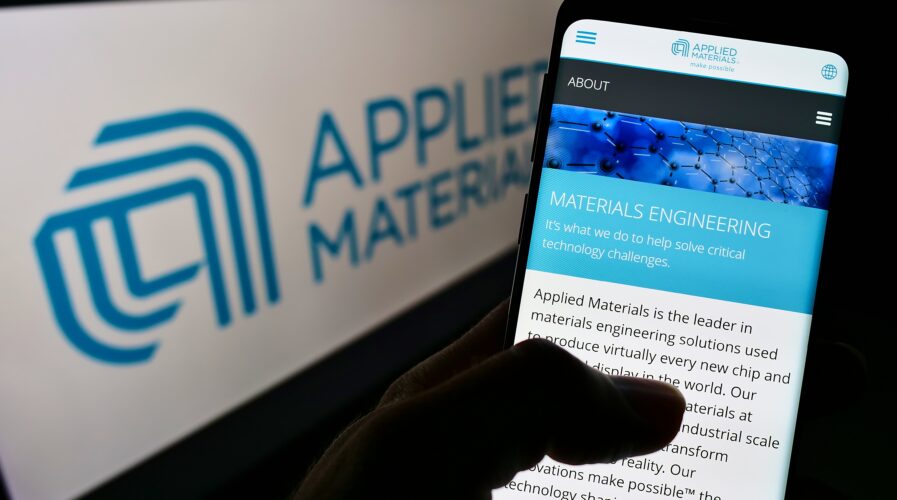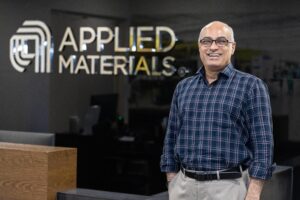
(Source – Shutterstock)
As the world scrambles for chips, here’s how Applied Materials is making it better in Singapore
The world has been struggling with the lack of semiconductors and supply chip mayhem over the last two years. When things started looking promising once again earlier this year, more snags came along the way — the lack of chips to make chips. The fresh hurdles were detrimental to the wide scale of expansion by semiconductor players worldwide, including that of chip-equipment maker Applied Materials Inc.
The California-based company is among the many manufacturers that have been scrambling to secure the parts it needs to finish products. Making matters more complicated is the strong customer demand and snags in the supply chain. According to a June report by the Wall Street Journal, Applied Materials lost out on about US$150 million in sales during the quarter ended May 1, because of pandemic restrictions in Shanghai that affected its suppliers for silicon components and other parts.
Having reported US$6.25 billion in revenue for the quarter, or 12% more than a year earlier, Applied Materials expects to recognize the revenue it missed out on during the quarter later in the year once it receives delayed parts and completes its orders. In light of that, Tech Wire Asia recently had the opportunity to speak with Arvind Sundarrajan, Managing Director for Applied Materials’ Advanced Packaging Development Center in Singapore.
Arvind discussed how Applied Materials, one of the world’s largest semiconductor equipment makers, anchored Singapore as a critical R&D center to innovate and expand its capabilities to support the supply and development of semiconductor chips globally. The interview has been edited slightly for clarity and length.
What are your views on the semiconductor industry and the current shortage, especially within Southeast Asia and Singapore precisely?
The chip shortage illustrates how important semiconductors have become to the global economy. There are three reasons for the shortage: new demand drivers, greater silicon content in all devices and the slowing of traditional Moore’s Law scaling. The AI Era, the fourth major wave of computing, is creating more uses for chips with applications like IoT, Big Data, 5G, smart vehicles, becoming more prevalent.

Arvind Sundarrajan, Managing Director for Applied Materials’ Advanced Packaging Development Center in Singapore.
Silicon content is going up in many kinds of digital devices – including smartphones, data centers and cars. We no longer get 2X the transistors every two years. This is why Applied Materials’ R&D collaborations aim to accelerate the development of heterogeneous integration solutions which can help customers overcome the challenges of traditional Moore’s Law scaling.
What is the importance of constant innovation and development in the industry, and what does advanced packaging do for the space?
Applied Materials is deeply invested in innovation and R&D, as we believe that leadership in materials engineering is our sustained competitive advantage. Advanced packaging is a way to bring chips together to optimize performance and cost. By combining chips of various nodes and functions in a single package, heterogeneous integration also enables smaller form factors and greater design and manufacturing flexibility.
It enables our customers, the chipmakers, to make continued advances in power, performance, area, cost and time-to-market. Applied Materials is the largest supplier of advanced packaging technologies with optimized products spanning Etch, PVD, CVD, CMP, Electroplating, Surface treatments, Annealing and more.
We are proud that the Advanced Packaging Development Center (APDC) in Singapore is one of the industry’s most advanced wafer-level packaging labs. In addition to enabling the foundational building blocks of heterogeneous integration, the center provides a platform to accelerate development of custom hybrid bonding test vehicles including design, modeling/simulation, fabrication and testing.
When setting up Applied Materials’ R&D footprint in the region, what were the challenges faced in furthering the development of advanced packaging technology?
Back in 2011, we were looking to deepen our capabilities in advanced packaging and expand our R&D footprint outside of the US for the first time. After doing our research, we decided to expand into Singapore as it ranks highly for ease of doing business, had ideal infrastructure and a robust IP regime, which were important considerations for market penetration.
We received strong support from the Singapore government and our partner, A*STAR’s Institute of Microelectronics (IME), whose expertise in innovative package design and technology platforms allowed us to hit the ground running. While it was tough building up a new R&D center in a new location from scratch, it has truly proven to be a risk that paid off. Over the past 10 years, Applied Materials and A*STAR’s IME has had a successful collaboration in developing key capabilities in wafer-level packaging, resulting in several new products and numerous customer engagements.

Ceremony to kick off expansion of Applied Materials and A*STAR R&D collaboration on Dec 23, 2021. Source: Applied Materials
APDC in Singapore is Applied’s main location for wafer level packaging R&D and product development globally, housing some of our most advanced tools and technologies. For A*STAR’s IME and Singapore, this collaboration will benefit partners in the ecosystem, attract new industry players, and strengthen Singapore’s position as a global leader in the advanced packaging sector.
It is important for Applied to give back and nurture future talent. Our internship program at APDC has given opportunities to more than 100 interns in the region to kick-start their careers in the fields of semiconductor engineering and R&D, and we have also brought many talents onboard with us, full-time, as we expanded over the years.
The learnings and success from APDC gave us the confidence to do more in and with Singapore. Today, we have launched 2 new innovation programs from Singapore, Applied Materials-NUS Advanced Materials Corporate Laboratory which focuses on R&D in advanced materials engineering, and Veranome Biosystems, which provides the spatial analysis market with a reliable, easy-to-use, end-to-end multi-omics solution.
Can you share with us Applied Materials recent major R&D partnerships?
In 2021, we extended our ongoing R&D collaboration with A*STAR’s IME by five years, to 2026, with a new S$286M investment. This latest investment will go towards upgrading and expanding our joint lab, the APDC in Singapore, to accelerate materials, equipment and process technology solutions, for hybrid bonding and other emerging 3D chip integration technologies.
The expansion will provide semiconductor providers with a complete suite of tools and technologies for developing and prototyping hybrid bonding package designs, which are used to improve power efficiency and system performance.
What’s next for Applied Materials?
Amid tremendous growth of the semiconductor industry, R&D will be more important than ever as we sustain our leading expertise in materials engineering. With our new collaboration phase with A*STAR’s IME since 2021, we anticipate opportunities for R&D talent to join us as we expand our workforce and deepen our capabilities in advanced packaging.
Singapore is a key strategic region for Applied. We have established strong partnerships with research organizations, academic institutes and the local supply chain. I look forward to continued collaborations that foster value-creation, talent development and enrichment of the R&D ecosystem here.
READ MORE
- Ethical AI: The renewed importance of safeguarding data and customer privacy in Generative AI applications
- How Japan balances AI-driven opportunities with cybersecurity needs
- Deploying SASE: Benchmarking your approach
- Insurance everywhere all at once: the digital transformation of the APAC insurance industry
- Google parent Alphabet eyes HubSpot: A potential acquisition shaping the future of CRM
